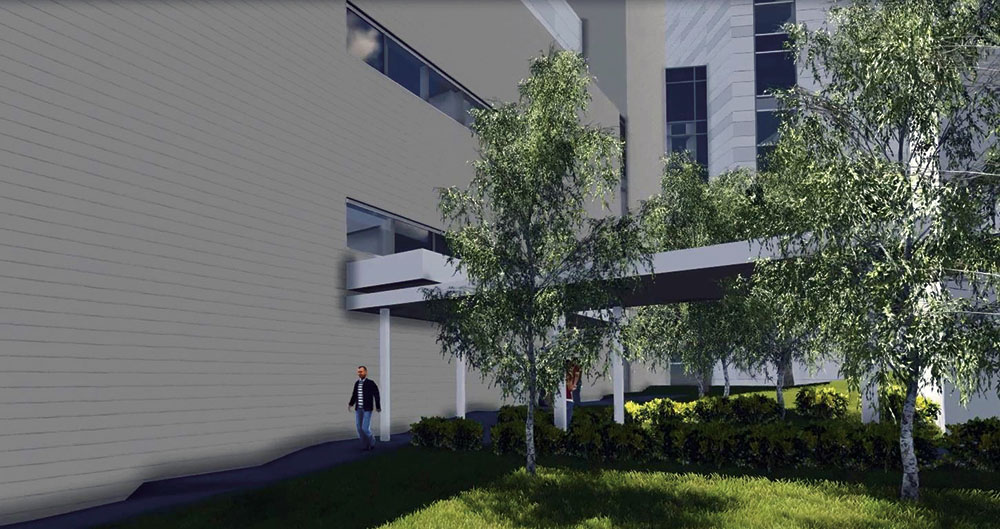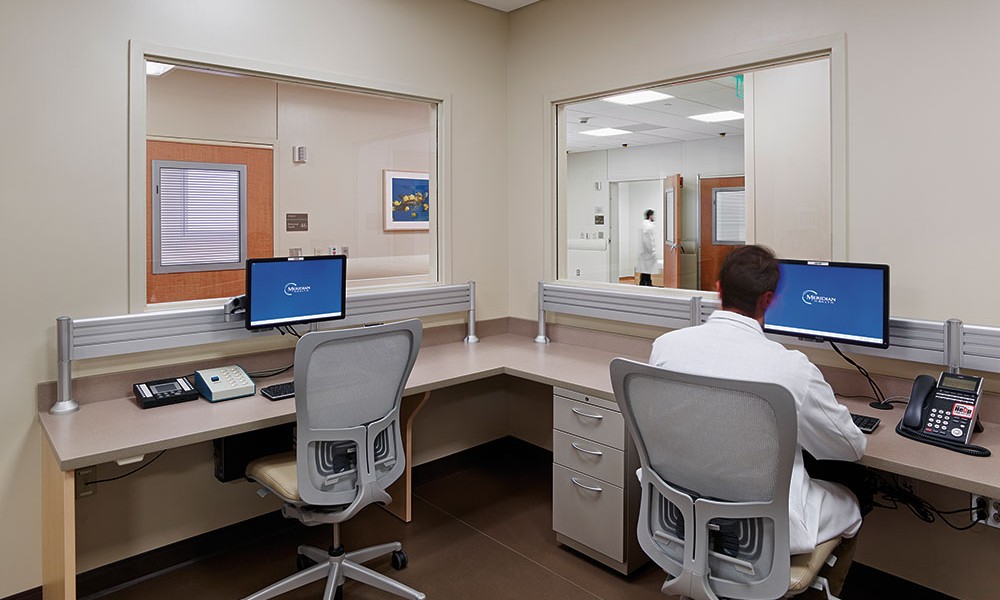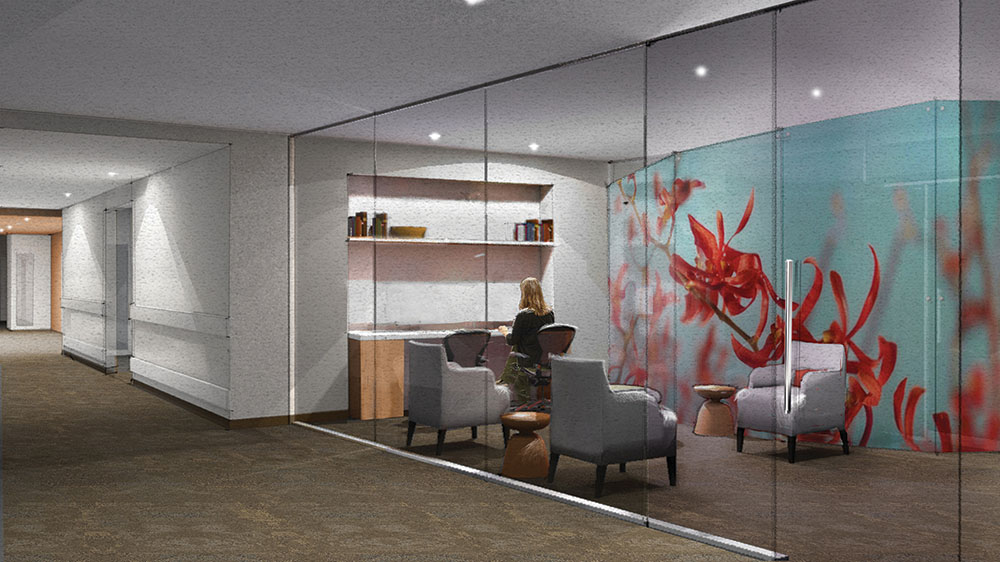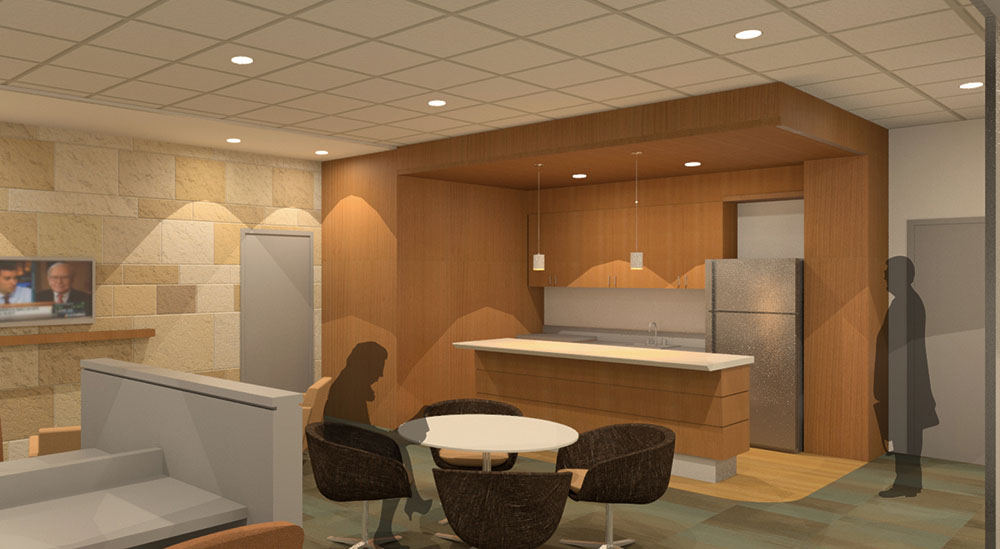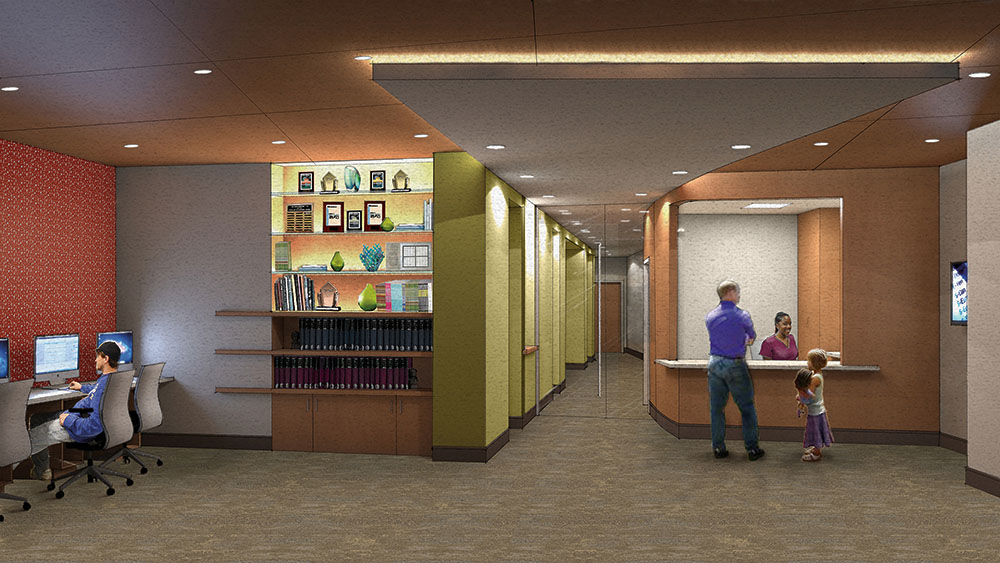Design considerations for the total health of caregivers
By Bhargav Goswami, Tushar Gupta & Mark Vaughan
We believe that we are human beings, caring for other human beings. That simple, profound statement is at the top of the list of Planetree beliefs. Although not every hospital is a part of the Planetree organization, an international advocacy group that partners with healthcare providers to create and support patient-centered care and cultures, healthcare facilities across the country are keenly focused on caring for patients, families and, just as importantly, staff.
Physicians, nurses and other clinical staff are on the frontlines of the healthcare system. In order to provide spaces and equipment to deliver the highest quality of care 24/7, medical planners, architects and designers are involving them closely in the earliest stages of project development. Clinical staff has a personal stake in creating the most effective environment for patients and for themselves. Major decisions taken as part of a participatory planning process are an investment in future success.
From seemingly straightforward decisions regarding the location of supply rooms to the sensitive layout of surgery suites to the design of “off-stage” spaces, the most successful solutions are a result of a robust dialogue with clinical staff. The evolution of design decisions on the following projects demonstrates the positive impact of staff involvement in the process. While each healthcare institution has its own mission and culture, all share a commitment to the health and well-being of patients and the caregivers who make it possible.
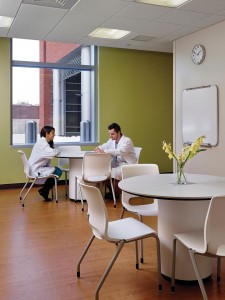 Ocean Medical Center expansion, Brick, N.J.
Ocean Medical Center expansion, Brick, N.J.
Ocean Medical Center, a growing, nonprofit community medical campus on the Jersey Shore that is part of the Meridian Health System, recently expanded, adding a three-story building that includes shelled space for future diagnostic programs and a 36-bed nursing floor. The ground floor is home to the Hirair and Anna Hovanian Emergency Care Center, which opened in March 2014. At the opening, Dean Q. Lin, FACHE, president of Ocean Medical Center said, “It [the facility] was about more than making a physical transformation. It was about creating an environment of tranquility and comfort when people are at their highest stress levels, and providing a setting that calms you every step of the way.”
The new ED was also designed to reduce stress on the clinical staff. Early discussions with staff led to the introduction of natural light deep in the workplaces, the development of an outdoor courtyard dedicated to staff and a layout that puts medical equipment and supplies in the most convenient and accessible locations. In the behavioral unit, where incidents of violence are not uncommon, the open concept workstations are plexi-wrapped to protect the staff without reducing the sightlines to the patient rooms or the sense of openness and accessibility.
A full complement of Rex co-workers and physician partners were involved in the project visioning and design development of the new 307,000-square-foot (plus 100,000 square feet of renovations) North Carolina Heart & Vascular Hospital, which is scheduled to open in 2016.
“Everyone on board — nurses, cardiologists, surgeons — helped create the vision and drove design decisions because they felt they had a personal stake in the outcome,” said Chad T. Lefteris, vice president, support services at Rex, which is part of the UNC Health Care System. “While there are those who believe that having that many people involved slows the process, our experience is opposite. We move faster and more efficiently because there is broad ownership.”
By keeping a consistent focus on the patient, physicians and other clinicians, the Rex team sought a balanced design equation rather than an idealized, hyper-efficient design. This focus led to the development of a new approach to the building — a staff entry that will provide a good first impression as people come to work. For physicians pressed for time, the designers re-thought a pathway from the parking area to the hospital that will allow doctors to move straight from their cars up a single flight of stairs to a locker room just off the cath labs. There’s also a small amenity space for physicians, designed like an airport lounge, just off stage where surgeons can step out for a quick break to check messages and take a deep breath.
Listening to the co-workers also resulted in the design of 10-foot-wide corridors rather than the standard eight on the bed floors adjacent to the nursing units and on the cath lab floors that will accommodate groups of two to three people plus two or three pieces of equipment when transporting patients. The extra room is also a benefit in an academic teaching facility, like the hospital, when rounding teams of physicians, residents and medical students gather in the corridors congesting circulation.
Stamford Heath System’s New Hospital, Stamford, Conn.
Set in a park-like environment on the Stamford campus, the new hospital is an 11-story, 647,000-square-foot specialty healthcare facility. Engaged staff has been critical to the development of the new building. “As a Planetree hospital we are a person-centered organization — that means patients and staff,” said Deborah Fedeli, director of patient-centered services. “We brought the members of the Patient & Family Advisory Council along with our staff on our benchmarking tours of other hospitals. We wanted to hear what they thought would work best from the patient perspective; what would enhance — rather than hinder — the patient experience.”
What began early in the process has continued as the design team created mock-up rooms and sought the input of as many stakeholders as possible on everything from sinks and equipment to the placement of electrical outlets. Feedback in hand, they made adjustments and again invited comments.
The new hospital will provide many supportive spaces and amenities for the clinical staff, including a staff lounge in prime real estate on the exterior wall. Access to nature, light and quiet are as important to staff as they are to patients and the new facility features green roof space dedicated to staff, as well as other outdoor spaces, quiet zones and meditation spaces for staff and patient families. There’s also a touchdown space on the window wall within the sterile zone in the surgery suite for doctors. Nursing staff along the south side of the building have views to the Long Island Sound; other features include skylights and ergonomic workstations.
The hospital offers a variety of other services and amenities to support patients, their family members and staff that will be featured in the new building. This includes a concierge desk and access to integrative medicine treatment, including massage.
Each of these hospitals and many more like them value the extraordinary dedication that clinical staff brings to their often rewarding, nearly always stressful work. By engaging staff in the planning and design of facilities, they capture not only their knowledge of procedures and best practices, but they help create environments that allow them to achieve the best possible outcomes for patients. It is truly people-centered design.
Author: Bhargav Goswami, Tushar Gupta & Mark Vaughan
Tushar Gupta, AIA, NCARB, is a principal and senior designer and Bhargav Goswami, AIA, ACHA, LEED AP, is a principal and senior medical planner in WHR Architects’ Houston, Texas office. Mark Vaughan, AIA, ACHA is a senior principal, senior medical planner and studio leader; he heads WHR’s Dallas, Texas office.
Posted June 10, 2014
More Articles:
- CxA Workshop & Exam
Apr 29, 2024 – Apr 30, 2024 - EMP Seminar & Exam at CxEnergy 2024
Apr 29, 2024 – Apr 30, 2024 - CxEnergy
Apr 29, 2024 – May 2, 2024 - PHCC West 2024
Apr 29, 2024 – May 2, 2024 - Lean in Design Forum 2024
May 1, 2024 – May 2, 2024 - IFMA’s Facility Fusion Conference & Expo
May 5, 2024 – May 7, 2024 - ASHE Academy 2024
May 6, 2024 – May 10, 2024


